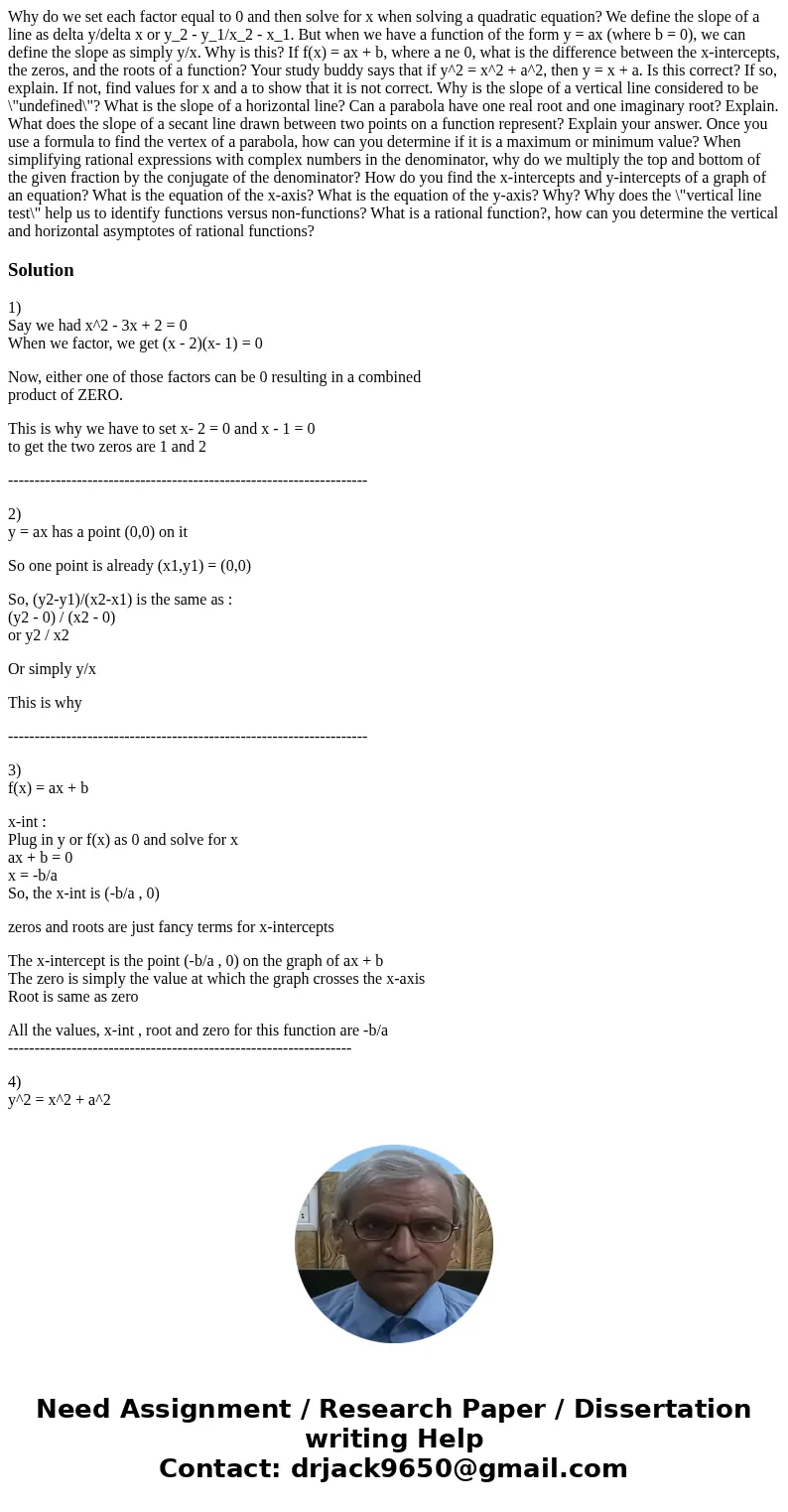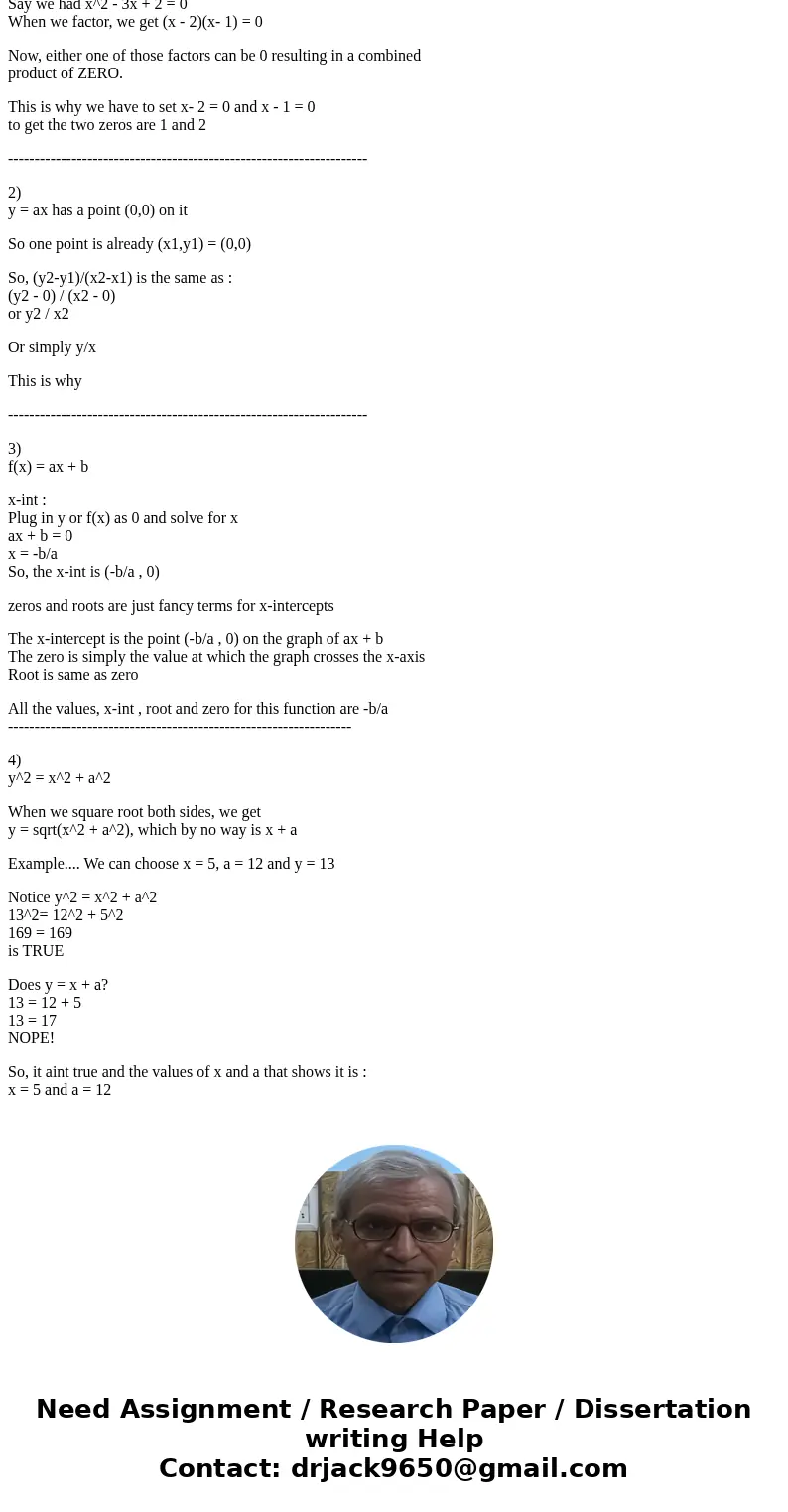Why do we set each factor equal to 0 and then solve for x wh
Solution
1)
Say we had x^2 - 3x + 2 = 0
When we factor, we get (x - 2)(x- 1) = 0
Now, either one of those factors can be 0 resulting in a combined
product of ZERO.
This is why we have to set x- 2 = 0 and x - 1 = 0
to get the two zeros are 1 and 2
--------------------------------------------------------------------
2)
y = ax has a point (0,0) on it
So one point is already (x1,y1) = (0,0)
So, (y2-y1)/(x2-x1) is the same as :
(y2 - 0) / (x2 - 0)
or y2 / x2
Or simply y/x
This is why
--------------------------------------------------------------------
3)
f(x) = ax + b
x-int :
Plug in y or f(x) as 0 and solve for x
ax + b = 0
x = -b/a
So, the x-int is (-b/a , 0)
zeros and roots are just fancy terms for x-intercepts
The x-intercept is the point (-b/a , 0) on the graph of ax + b
The zero is simply the value at which the graph crosses the x-axis
Root is same as zero
All the values, x-int , root and zero for this function are -b/a
-----------------------------------------------------------------
4)
y^2 = x^2 + a^2
When we square root both sides, we get
y = sqrt(x^2 + a^2), which by no way is x + a
Example.... We can choose x = 5, a = 12 and y = 13
Notice y^2 = x^2 + a^2
13^2= 12^2 + 5^2
169 = 169
is TRUE
Does y = x + a?
13 = 12 + 5
13 = 17
NOPE!
So, it aint true and the values of x and a that shows it is :
x = 5 and a = 12


 Homework Sourse
Homework Sourse